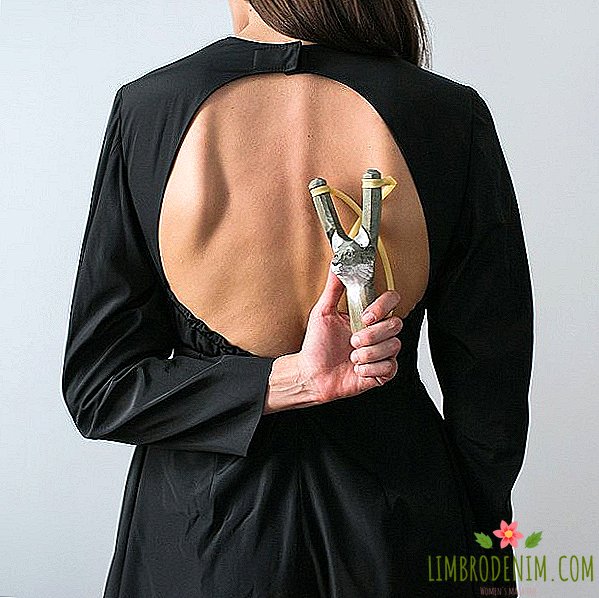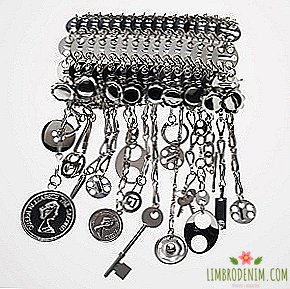Diversity, Ecology, Comfort: Where Fashion Moves
Trend prediction - the work of trend hunters. But one does not have to be an employee of the forcasting agency, which monitors public sentiment, to notice: some trends do not fade for that season in a row and will disappear, apparently, not soon. It's not about cowboy boots, the return of glasses "aviators" from the 2000s, palazzo trousers or wide shoulders on jackets. Something more is at stake - themes and ideas that all big brands without exception have to take into account. We talk about the macro trends, without which it is impossible to imagine today's fashion.

Responsible consumption
Giant landfill, similar to the city, the killing of animals, plants that pollute the air and water - the fashion industry ranks second in terms of the damage it causes to the environment. The fashion for responsible consumption, and in parallel with it the refusal to wear natural fur is not news, but in 2017 they talked about it so much and so desperately that it became clear: only more is further.
People began to think that even buying a regular T-shirt in the mass market is not only a matter of ethics (working in Asian factories producing clothes can be simply dangerous), but also of the future of the planet. Claiming brands and corporations can be infinite, but more and more people wisely decided to start with themselves. We have already told how you can help the environment without suffering: buy less, organize swaps, that is, change clothes with friends, and teach yourself to second-hand or resale. Macro-tendency for conscious consumption, by the way, inspired a whole galaxy of young designers, many of whom work with vintage fabrics and rework old things into new ones.
Well-known brands, too, cannot but respond: ignoring environmental and social slogans already seems simply indecent. The conglomerate Kering, which owns Balenciaga and Saint Laurent, took the initiative of humane production of goods and supported the program "Fashion for Good". The goals for 2025 include reducing carbon emissions, reducing water volumes, minimizing waste, and more. This year Gucci announced that they are refusing to use fur (and this is with the huge sales of fur slippers and fur coats in the spirit of Margot Tenenbaum), and Stella McCartney filmed an advertising campaign against the dump with the literal message: "Look at how much we consume."


The mass market, which more often than others have to fend off the attacks of eco-organizations, has not lagged behind: since last year, Zara has successfully sold its line of organic cotton Join Life, and this year’s Mango presented a line of Committed - clothes made from organic or recycled materials. H & M and Monki continue to collect old items for recycling in exchange for a discount in their stores: 15% give per bag to H & M and 10% per bag to Monki. One-time (so far) promotions are also arranged by Uniqlo: on November 11, in brand stores in Moscow, St. Petersburg, Kazan and Nizhny Novgorod, you can get a free T-shirt from the Heattech lineup in exchange for any old one. One may blame brands for hypocritical marketing, but the fact remains: these changes are for the better.


Street fashion and sport
The grand mediahash from the Louis Vuitton and Supreme partnership announcements is proof of how significant street fashion has become today. All the big brands want their piece of cake from collaborations with streetwear, because they understand that the one who can get the favor of the younger generation will win. The cost of a thing is not so important to him, its rarity, exclusivity is more interesting. This is what street brands can offer that release rare releases from season to season. "Today, fashion has nothing to sell: the luxury is not rushing, the last untouched glade remains - streetwear," explains Alexander Goncharenko, marketing coordinator of the squat skateshop, who believes that the hyip around the streetwear is bloated.
The word "Hipbist" began to sound more and more often - it is so commonly called a young man who is fascinated by street brands, things that can later be resold on the Internet, that is, in fact, almost all of today's youth. We don’t really like this definition, the manifesto on this subject can be found here. And yet street fashion is truly one of the most interesting phenomena in the modern industry.
The course on comfort, high-tech fabrics, functionality convince us that interest in street clothes in the near future will not subside. Brand names like Acronym and Cav Empt, thanks to the public accounts of VKontakte, are already familiar to even the 13-year-old - all we can do is watch.


Diversity
Sometimes it seems that the incredible popularity of conventionally beautiful Kaiya Gerber and Lily-Rose Depp arising from nowhere levels all the attempts of the fashion industry to turn to the side of diversity. But this is an illusion. We are no longer asking ourselves whether fashion is ready to give a chance to models of different types of figure, age and skin color, we ask only: "Why not more?"
TheFashionSpot forum summed up the traditional results of the spring-summer 2018 season: the number of models of African, Asian and Latin American origin, plus-size models over fifty, transgender models and those who are not ready to determine gender in principle has increased on the catwalks. Even compared to the results of three-year-old impressions, the progress is impressive: in three years, the share of the so-called non-standard participants in fashion weeks increased from 17% to 30.2% of the total.
There are more and more agencies promoting a variety of models, including in Russia and Ukraine. At the end of 2017, it is even difficult to call their signatories “non-standard” - so much for a couple of years, these same “standards” have become blurred. This year alone, Vetements took a lookbook with ordinary people in Zurich, Balenciaga released real fathers with their children to the podium, Acne Studios showed a cruise collection on a 78-year-old Verushka. There is no need to talk about young brands: shooting conventional models are becoming a rarity, and Russia, where such changes have always proceeded with difficulty, is no exception. It is enough to recall the news headlines on Wonderzine for the last two days: "GUM employees in the Lookbook" Sections "or" 60-year-old model appeared in the Monki lookbook. "


Comfort
“Clothes should be comfortable first of all” - the most common thought that a weekly issue of the “Wardrobe” column carries. An active lifestyle, sports, the opportunity to travel, which appears in an increasing number of people - clothes also become more comfortable and functional. Soft sweaters, huge down jackets, blankets, jeans - this is the choice of the city dweller today.
Shoes deserve a separate discussion: ten years ago it was difficult to imagine the popularity of ordinary sneakers, which moved heels on the shelves. In the huge zero studs were everywhere - and in the mass market, and in the suite, they began to wear from high school. Today it’s almost impossible to meet a schoolgirl in heels in a big city, but in an expensive pair of sneakers, please. Your version of the most popular pair of shoes today produces even a heavy suite: Louis Vuitton, Prada, Gucci and Chanel. On the cult of sneakers Balenciaga and can not speak. Thanks to the same trend, crocs continue to conquer the podiums. The next logical step on the part of brands is revival felt boots made of sheepskin, which has already begun.
Over the past few years, a whole wave of female designers has emerged, advocating comfortable clothing for themselves. Confessing "uneasy simplicity", they were able to find a compromise between the "feminine" fashion (Balmain and Dolce & Gabbana still feel very good on the market) and the mundane "street". Small brands that make clothes from natural materials, such as Paloma Wool, Carcel and Marieyat, also benefit from the convenience and ethical attitude to production, and these manufacturers will only get more over time.


Agender clothing
On the image of an androgynous, asexual creature a career of more than one pop star was built, David Bowie comes to mind first. Trend for agender clothing is also more than one decade. In the 90s - during the heyday of independent magazines and fanzines - the concept of "unisex" came to us, advocating a uniform for men and women. Since then, much has changed: a clear gender classification, which for centuries has defined social roles and the corresponding appearance, has been called into question.
Today, gender-relatedness, which nullifies the traditional rules of "male" and "female" wardrobes, is becoming widespread for the first time. The most progressive brands refuse to divide into male and female shows, online representations of concept stores like KM20 for clarity remove the same clothes both on guys and girls, and the archaic rules like "pink is for girls, and blue is for boys "no longer work even in children's departments.
“If you look globally, now the main trend is the cancellation of“ can ”and“ not ”. Everything is possible: any colors, any combinations, any styles,” we encountered such statements when creating our project, asking the men how they Feel in traditionally female things. Looking at our other shooting, devoted to gender clothes, it is also easy to come to the conclusion: all signs of “male” and “female” clothes - conventions that the next generation can already pass by.
Photo:Mango, Paloma Wool, Acne Studios, Palace, Stussy, Ports 1961, Joseph, KM20





